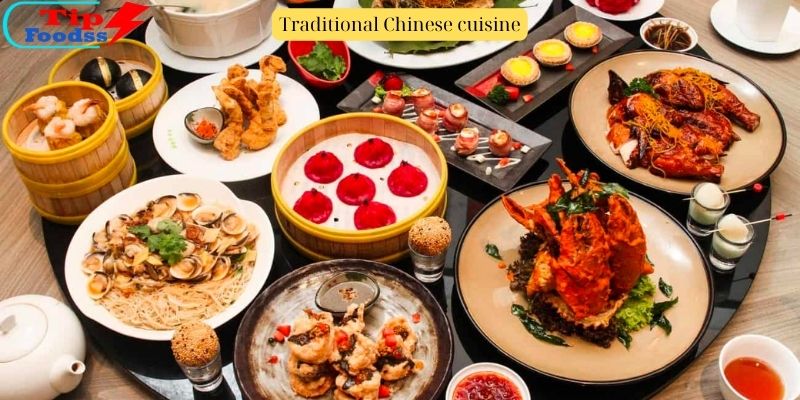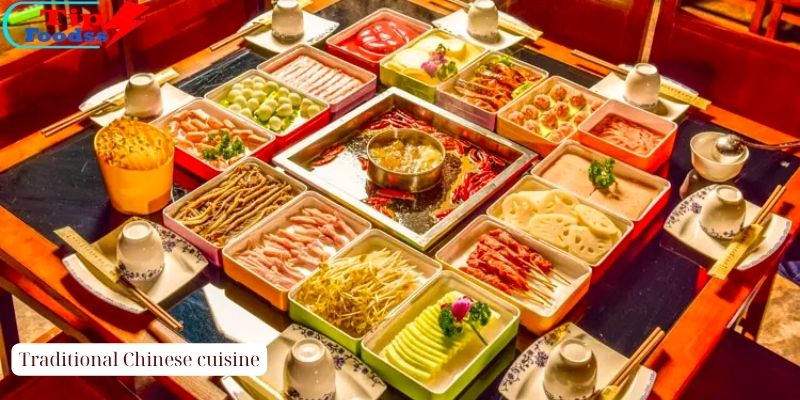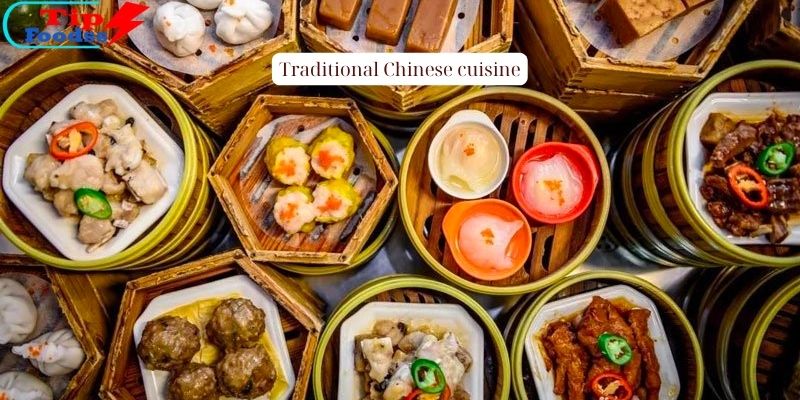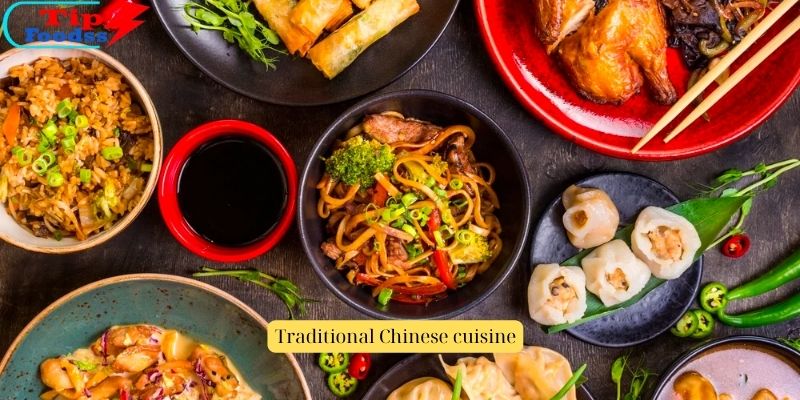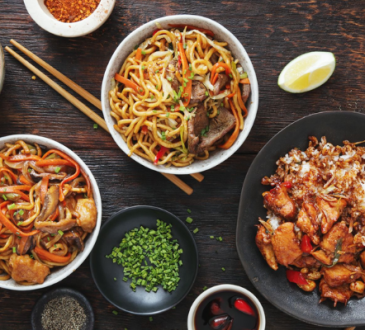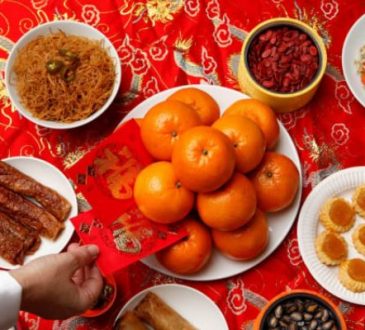Traditional Chinese cuisine: Unveiling the Rich Heritage
Traditional Chinese cuisine is a culinary marvel that has captivated taste buds worldwide for centuries. Rooted in a rich history and diverse regional influences, Chinese cuisine is an art that marries flavors, textures, and aromas in harmonious combinations. From the bustling streets of Beijing to the tranquil tea houses of Hangzhou, the essence of Chinese culinary heritage lies in its ability to satisfy not only hunger but also the soul. In this article, tipfoodss embark on a flavorful journey through the captivating world of Traditional Chinese cuisine, discovering its history, regional variations, iconic dishes, and cultural significance.
Contents
Historical Background of Chinese Cuisine
To understand the essence of traditional Chinese cuisine, one must delve into its ancient roots. Chinese culinary practices can be traced back thousands of years, influenced by philosophical principles such as Confucianism and Taoism. The Chinese believe in the harmony of opposites, and this concept is reflected in the balancing of flavors in their dishes.
Throughout history, the changing dynastic eras have left an indelible mark on Chinese food culture. The imperial courts of the Tang, Song, Ming, and Qing dynasties nurtured refined culinary arts, while the humble kitchens of common people cultivated innovative recipes using local ingredients. The Silk Road played a pivotal role in introducing new spices and cooking techniques, contributing to the evolution of Traditional Chinese cuisine.
Key Ingredients and Flavors in Traditional Chinese Cuisine
Central to Traditional Chinese cuisine are the staple foods of rice, noodles, and dumplings. Rice is the foundation of many meals, especially in southern China, while northern regions favor wheat-based dishes like dumplings and noodles. The Chinese embrace an array of fresh vegetables, herbs, and spices, harmoniously blending these ingredients to create tantalizing flavors.
One of the distinguishing features of Traditional Chinese cuisine is the art of balancing five fundamental flavors: sweet, sour, salty, bitter, and umami. Each dish aims to achieve a harmonious blend of these flavors, resulting in a delightful and well-rounded culinary experience.
Regional Variations of Traditional Chinese Cuisine
China’s vast territory gives rise to diverse regional cuisines, each boasting unique characteristics and local specialties. Northern cuisine, for instance, is known for its hearty and wheat-based dishes, with iconic delights like Beijing’s succulent Peking Duck stealing the spotlight. Conversely, southern cuisine tends to be lighter, making ample use of rice and fresh seafood to create dishes that appeal to the palate and nourish the body.
Eastern cuisine showcases the abundance of seafood and delicate flavors, while western cuisine, exemplified by the bold and spicy Sichuan dishes, delivers an explosion of fiery sensations on the taste buds. Central Chinese cuisine, on the other hand, impresses with its diverse range of exotic ingredients and aromatic spices.
Cooking Techniques in Chinese Cuisine
The art of Chinese cooking lies not only in the selection of ingredients but also in the mastery of cooking techniques. Stir-frying is a quick and high-heat method that preserves the natural flavors and textures of ingredients. Steaming is favored for its ability to retain nutrients, resulting in dishes that are both healthy and delicious. Braising involves slow-cooking to tenderize ingredients and infuse them with rich flavors, while deep-frying produces crispy and golden textures that delight the senses.
Iconic Dishes in Traditional Chinese Cuisine
The realm of traditional Chinese cuisine is brimming with iconic dishes that have become global favorites. One such dish is the famous Peking Duck, characterized by its crispy skin, succulent meat, and delicate pancakes. Kung Pao Chicken, a Sichuan specialty, offers a perfect balance of spiciness and savory goodness in a delightful stir-fry.
Dim Sum, a beloved culinary tradition, features an array of small dishes served during brunch, offering a feast for both the eyes and the palate. Shanghai’s signature Xiaolongbao, or soup-filled dumplings, is a testament to the Chinese ingenuity in crafting dumplings that burst with flavorful broth upon every bite.
The Cultural Significance of Chinese Dining Etiquette
In Chinese culture, dining is not just about sustenance but also about social harmony and respect for traditions. Traditional Chinese dining etiquette emphasizes the importance of sharing dishes and taking only small portions to ensure everyone gets a taste. Family meals and banquets hold deep cultural significance, fostering bonds and nurturing relationships.
The art of tea is also deeply ingrained in Chinese dining culture. Tea houses, both ancient and modern, serve as social hubs where people gather to enjoy a variety of teas while engaging in meaningful conversations.
Chinese Street Food and Snacks
Street food in China is a bustling world of flavors, offering an insight into the daily lives of the locals. From Jianbing, a savory breakfast crepe filled with egg and various condiments, to Lamb Skewers seasoned with fragrant spices, street food showcases the diversity and creativity of Chinese culinary traditions.
In addition to street food, Chinese snacks hold a special place in the hearts of the Chinese people. Whether it’s Mooncakes during the Mid-Autumn Festival or Rice Dumplings during the Dragon Boat Festival, each snack carries unique cultural significance and historical ties.
Chinese Desserts and Sweets
The finale of a Chinese meal often features a delightful array of desserts and sweets. Red Bean Paste, made from cooked red beans and sugar, is a common filling for pastries and buns, offering a comforting sweetness. Sticky Rice Balls, served during festivities and holidays, are symbolic of unity and harmony within families.
Chinese Cuisine’s Global Influence
As Chinese immigrants settled around the world, they brought with them the flavors and techniques of their native cuisine. Today, Chinese restaurants can be found in almost every corner of the globe, introducing the wonders of Chinese gastronomy to diverse cultures. Chinese flavors have also found their way into international cuisines, giving rise to fusion dishes that combine the best of both worlds.
Conclusion
Traditional Chinese cuisine is a timeless treasure that continues to inspire and delight food enthusiasts across the globe. From the aromatic spices of Sichuan to the delicate flavors of Cantonese dishes, Chinese cuisine offers a symphony of tastes that celebrate the beauty of nature’s bounty. The cultural significance of Chinese dining etiquette and the art of balancing flavors reflect the philosophy of harmony and balance that lies at the heart of Chinese culture.
As we savor the rich history, regional diversity, and iconic dishes of traditional Chinese cuisine, we are reminded of its enduring legacy and the unifying power of food. Embracing the flavors of China is not merely a culinary experience but a journey that connects us to the depth of its cultural heritage. So, the next time you indulge in a bowl of steaming dumplings or delight in the nuances of a carefully braised dish, know that you are immersing yourself in a culinary tradition that has stood the test of time and continues to enchant the world.

